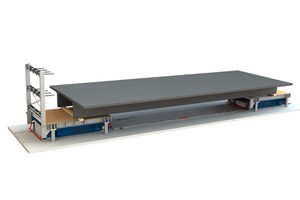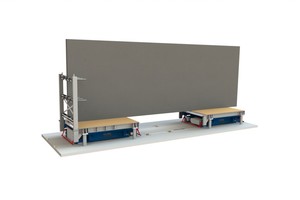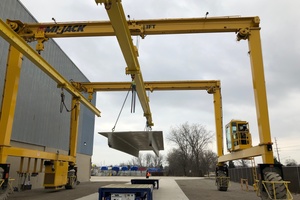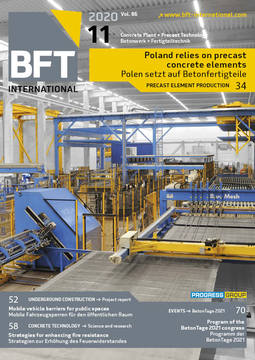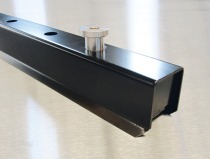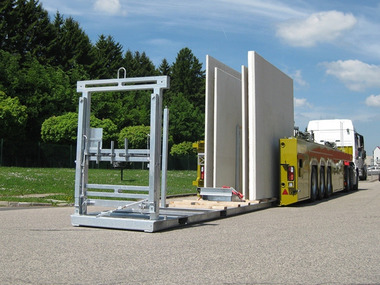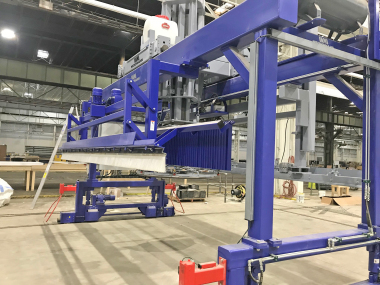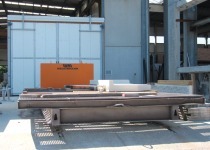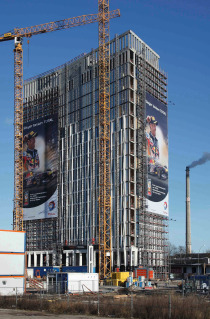Internal transportation system for large-sized concrete elements
The Kerkstra precast company is manufacturing double-tee slabs and large-sized façade elements, among others, at their Trenton factory near Detroit/USA. The removal of formwork early in the morning was a challenging part in the production process both in terms of organization and logistics, because trucks were used for the transportation of the elements to the storage area. For this purpose, individual semi-trailers were placed in the factory hall, being loaded gradually then. Afterwards, every semi-trailer was driven individually to the storage area, where they were unloaded with the aid of a rubber-tired gantry crane – also called MI-Jack.
Weckenmann was assigned with the task of developing a proposal for a transportation system that is independent of trucks, meeting the following requirements:
A maximum transport weight of 56 tons;
Transport of façade panels and double-tee slabs in any lengths;
Transport of façade elements, both horizontally and vertically;
Power supply by means of batteries;
Weather- and winter-proof design;
Operation by one person only;
Installation height as low as possible;
Use of transport racks which allow loading and positioning independent of vehicles.
The result of the planning and engineering project has successfully been in operation since spring 2020 and in detail consists of two rail-mounted low-floor vehicles, each with a powerful battery on board.
Depending on the length of the element to be transported, separate transport racks are positioned on a track system one behind the other along the production tables, either individually or in pairs. There are plug-in front blades available for the vertical transportation of façade elements.
Kerkstra simplifies procedures and increases productivity
The operator has the two vehicles move, either in synchronism or switched to individual operation, under the respective transport rack, lifts the same and moves the complete unit to an area outside the factory hall where either the double-tee slabs or a transport rack loaded with wall panels is taken over by the gantry crane. For safety reasons, the distance of the two carts to each other is permanently monitored in the synchronous drive mode so as to avoid any sliding down of the load if one cart fails.
The two carts are operated by means of an industrial radio remote control, which allows the operator to view the driving area in front, in driving direction respectively, in order to prevent possible collisions. In addition, each vehicle is equipped with safety brackets attached to the front side, stopping the vehicle in case of emergency.
The battery capacity is provided with large reserves, allowing for 25 transports with a total length of about 5 km per day without any problems and without having to be recharged. The track system existing in the outdoor area has a sufficient length for placing loaded transport racks there, without having to wait for the gantry crane. This results in a temporal equalization between the tasks of the gantry crane and the formwork stripping crew which has to clear the casting beds as fast as possible in the morning.
The vehicles are equipped according to the weather conditions to be expected in North America and have an attachable snow plow – if it should be necessary to remove snow from the trackway in winter.
Summary: This investment helped Kerkstra to simplify the production processes and to improve them considerably. Idle times for removing the formwork were reduced and the overall productivity increased.

